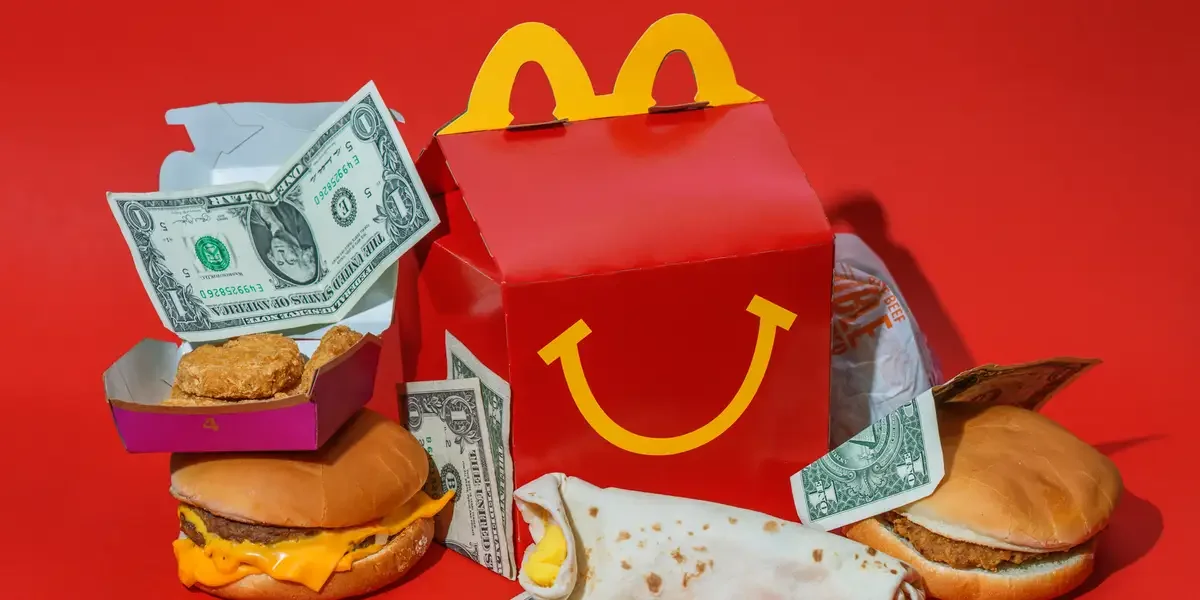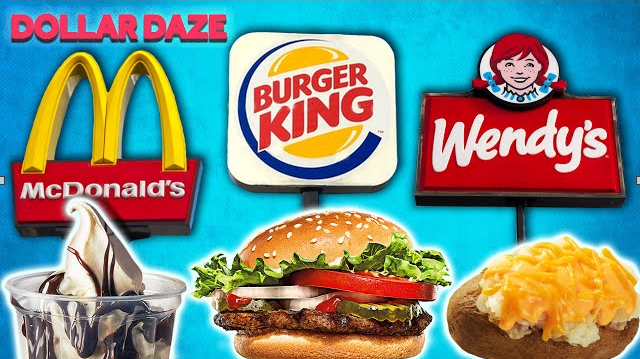
Over the past few years, the price of fast food has steadily increased, and as I delved into the factors behind this trend, the reasons became clear. I learned how a combination of inflation, labor costs, and changing consumer behavior is reshaping the fast food industry.
As someone who used to turn to fast food for a quick, cheap meal, I’ve seen firsthand how what used to be an affordable option has become increasingly expensive. Let’s explore the dynamics behind this shift, what’s causing the surge in prices, and what this means for consumers like you and me.
The Surge in Fast Food Prices: Understanding the Inflation

Between 2019 and 2023, fast food prices rose by nearly 28%, outpacing both full-service restaurant prices and overall inflation, which climbed by 24% and 19%, respectively. This means that while the cost of living has risen across the board, fast food prices have been climbing even faster.
Why is this happening?
- Food and Packaging Costs: From 2022 to 2023 alone, food and packaging prices increased by around 11%. Items like beef, chicken, and vegetables have all seen price hikes due to supply chain disruptions, climate change, and other global factors.
- Labor Costs: One of the biggest drivers of the price surge is the rising cost of labor. After the pandemic, many fast food chains struggled to attract employees back to work. The labor market became more competitive, leading to wage increases. As a result, these higher labor costs are passed on to the consumer in the form of more expensive menu items.
Key Stats:
- Fast food inflation (2019–2023): +28%
- Full-service restaurant inflation: +24%
- Overall inflation: +19%
Labor Costs: A Key Factor in Fast Food Price Increases

Labor shortages have plagued the fast food industry since the COVID-19 pandemic. Many workers didn’t return to their jobs, and those who did demanded higher wages. With fewer employees available and more competition for talent, restaurants had no choice but to increase wages to stay afloat.
How does this affect menu prices?
- Wages and Staffing: Wage pressures, particularly from minimum wage laws, have forced companies like McDonald’s and Wendy’s to raise wages significantly. In places like California, where minimum wage laws are stricter, this has had a profound impact on operating costs.
- Higher Operating Costs: Since labor costs make up a substantial portion of fast food expenses, raising wages means higher menu prices. It’s a simple equation: if it costs more to operate a restaurant, those costs are passed on to us, the customers.
While companies have tried to offset this with efficiency improvements, there’s only so much they can do without raising prices.
Changing Consumer Behavior: Eating Less, Spending the Same
Interestingly, while fast food prices have gone up, consumer spending hasn’t decreased drastically. People are still spending roughly the same amount of money on fast food, but they are visiting less frequently. For example, if you used to grab fast food 10 times a month, you might now go 7 or 8 times, but your overall spending remains the same due to the higher prices.
Consumer Shifts:
- Reduced Visits: Lower-income consumers—especially those earning less than $50,000 per year—have been hit hardest by rising prices. They visit fast food chains less frequently as their purchasing power has diminished since the end of pandemic-related financial assistance.
- Higher Checks: While consumers are cutting back on visits, they are still spending more per meal. The average fast food check in early 2024 was around $18, a 4.5% increase from the previous year.
This pattern reflects a broader economic trend where consumers are forced to prioritize fewer meals but spend more per visit. For fast food chains, the focus is now shifting from volume of sales to value per transaction.
Adapting to the New Normal: Fast Food Chains’ Response

Fast food chains are adapting to this changing landscape through several strategies aimed at balancing rising costs and consumer demand for affordable meals.
1. Mobile Apps and Loyalty Programs
In a bid to retain customers and drive repeat business, fast food chains are investing heavily in mobile apps and loyalty programs. By doing so, they can offer targeted promotions and discounts based on individual purchasing patterns. For example:
- McDonald’s and Wendy’s are expanding their loyalty programs, which offer exclusive deals to customers who engage through their apps.
- These programs allow fast food chains to drive customer engagement and personalized marketing, helping them maintain sales even as prices rise.
2. Increased Efficiency
To combat rising labor costs, fast food chains are also adopting new technologies to increase efficiency. From self-service kiosks to automated ordering systems, these innovations are helping to reduce the need for human labor and streamline operations.
However, these changes have their limits, and even with improved efficiency, prices are unlikely to go back down.
The End of the $1 Menu

Gone are the days of the $1 menu that fast food chains once used to attract budget-conscious customers. As prices continue to rise, affordable options are becoming harder to find, which raises questions about how fast food chains will continue to cater to lower-income customers.
- McDonald’s Dollar Menu: What was once a staple of affordable fast food is now largely a thing of the past. Instead, you’re more likely to find “value menus” where items are priced closer to $2 or $3.
- Subway’s $5 Footlong: This iconic deal is another casualty of rising food and labor costs. Today, you’re more likely to pay $6–$7 for the same sandwich.
Fast food chains understand the need to offer affordable options to retain customers, but the reality is that prices are unlikely to return to pre-pandemic levels.
Sales vs. Foot Traffic: A Shifting Dynamic
While fewer people are visiting fast food restaurants, sales remain strong, thanks in large part to higher prices. Chains like McDonald’s and KFC have seen their revenue surge past pre-pandemic levels, despite a dip in foot traffic.
How is this possible?
- Higher Prices: As the average check size has increased, it compensates for the loss in foot traffic. Fewer customers are coming in, but those who do visit are spending more.
- Mobile Orders: Mobile app orders have also helped boost sales. By offering convenient mobile ordering and pickup options, fast food chains can serve more customers efficiently, even with fewer employees.
Will Fast Food Prices Ever Go Back Down?

The short answer is no—fast food prices are unlikely to decrease anytime soon. While the rate of increase may slow, the combination of higher labor and food costs means that once prices go up, they rarely go down.
Why won’t prices decrease?
- Labor Costs: Once wages are raised, it’s difficult for companies to lower them. Higher wages have become the new norm, especially in states with strict minimum wage laws.
- Food Prices: As the costs of ingredients and packaging continue to rise, fast food chains are unlikely to absorb these increases. Instead, they’ll pass the costs on to consumers.
While price increases may slow, the trend is clear: fast food is no longer the inexpensive option it once was.
What This Means for You
As a consumer, it’s becoming increasingly important to budget carefully when eating out. The days of grabbing a quick, cheap meal at a fast food joint are fading, and while fast food will always offer convenience, it’s no longer the low-cost option it once was.
Practical Tips for Managing Fast Food Costs:
- Take advantage of loyalty programs: Many fast food chains offer loyalty programs that can help you save money. Look for deals and promotions that give you the most value for your dollar.
- Use mobile apps: Mobile apps often have exclusive discounts and rewards. Make it a habit to check the app before placing an order.
- Choose wisely: Opt for value meals or combo deals that offer the best price-to-portion ratio. Avoid extras that can quickly increase the total cost.
Conclusion: The Changing Fast Food Landscape
The fast food industry is undergoing a significant transformation, driven by rising costs for labor, food, and packaging. While prices are unlikely to decrease, fast food chains are adapting by increasing efficiency, leveraging technology, and using loyalty programs to retain customers.
As consumers, we must adapt as well by making smarter choices and taking advantage of the resources available to help manage costs. Whether through mobile apps, loyalty programs, or simply adjusting how often we eat out, there are ways to navigate this new reality without breaking the bank. Fast food may no longer be the cheap option, but with some foresight, it can still offer convenience without derailing your budget.















